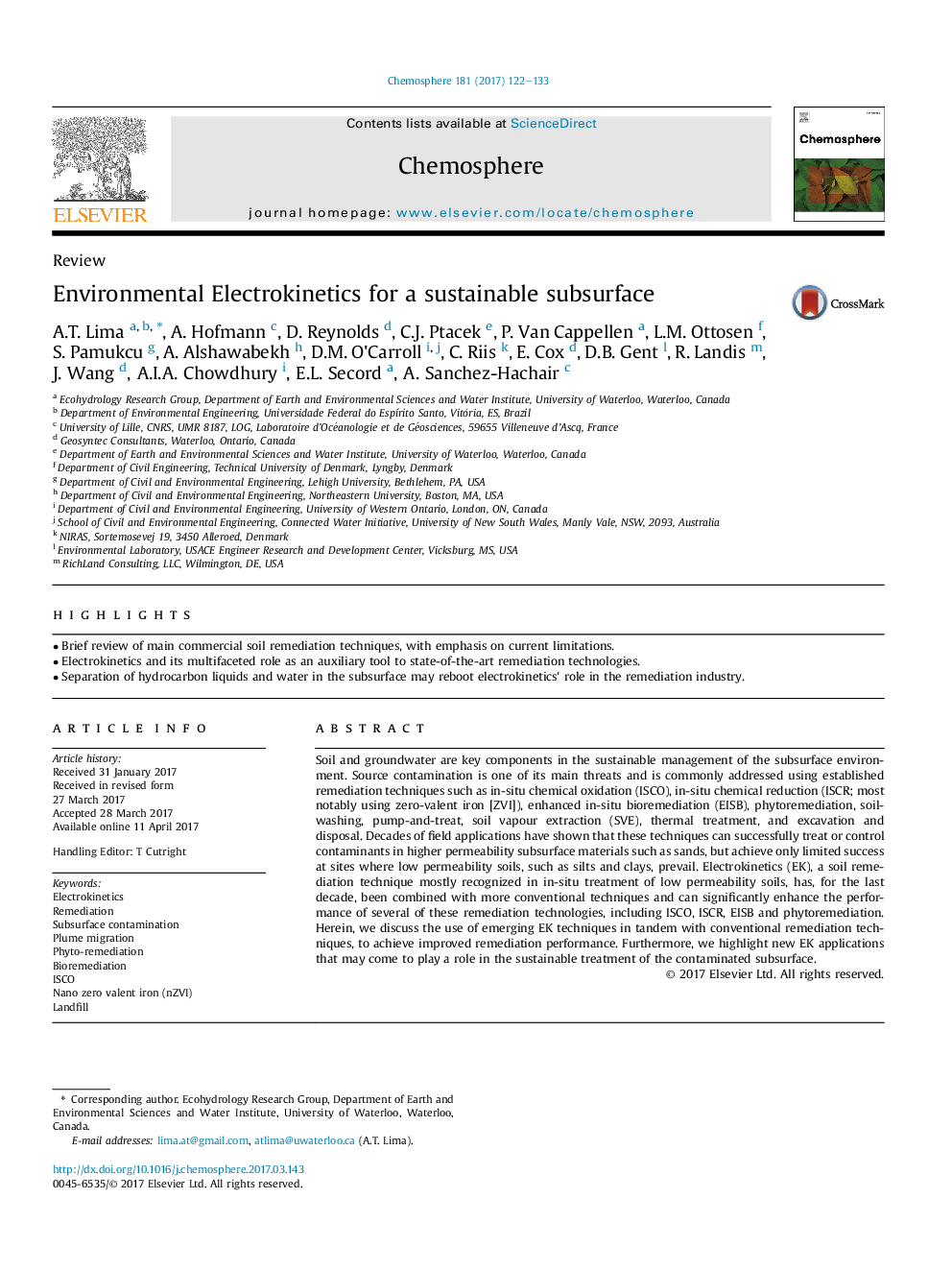| Article ID | Journal | Published Year | Pages | File Type |
|---|---|---|---|---|
| 5747188 | Chemosphere | 2017 | 12 Pages |
â¢Brief review of main commercial soil remediation techniques, with emphasis on current limitations.â¢Electrokinetics and its multifaceted role as an auxiliary tool to state-of-the-art remediation technologies.â¢Separation of hydrocarbon liquids and water in the subsurface may reboot electrokinetics' role in the remediation industry.
Soil and groundwater are key components in the sustainable management of the subsurface environment. Source contamination is one of its main threats and is commonly addressed using established remediation techniques such as in-situ chemical oxidation (ISCO), in-situ chemical reduction (ISCR; most notably using zero-valent iron [ZVI]), enhanced in-situ bioremediation (EISB), phytoremediation, soil-washing, pump-and-treat, soil vapour extraction (SVE), thermal treatment, and excavation and disposal. Decades of field applications have shown that these techniques can successfully treat or control contaminants in higher permeability subsurface materials such as sands, but achieve only limited success at sites where low permeability soils, such as silts and clays, prevail. Electrokinetics (EK), a soil remediation technique mostly recognized in in-situ treatment of low permeability soils, has, for the last decade, been combined with more conventional techniques and can significantly enhance the performance of several of these remediation technologies, including ISCO, ISCR, EISB and phytoremediation. Herein, we discuss the use of emerging EK techniques in tandem with conventional remediation techniques, to achieve improved remediation performance. Furthermore, we highlight new EK applications that may come to play a role in the sustainable treatment of the contaminated subsurface.
